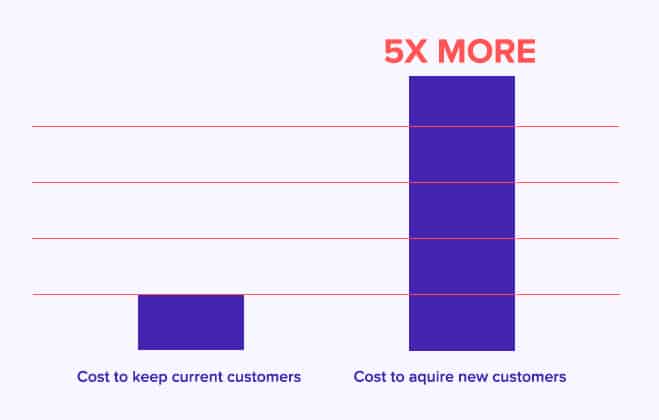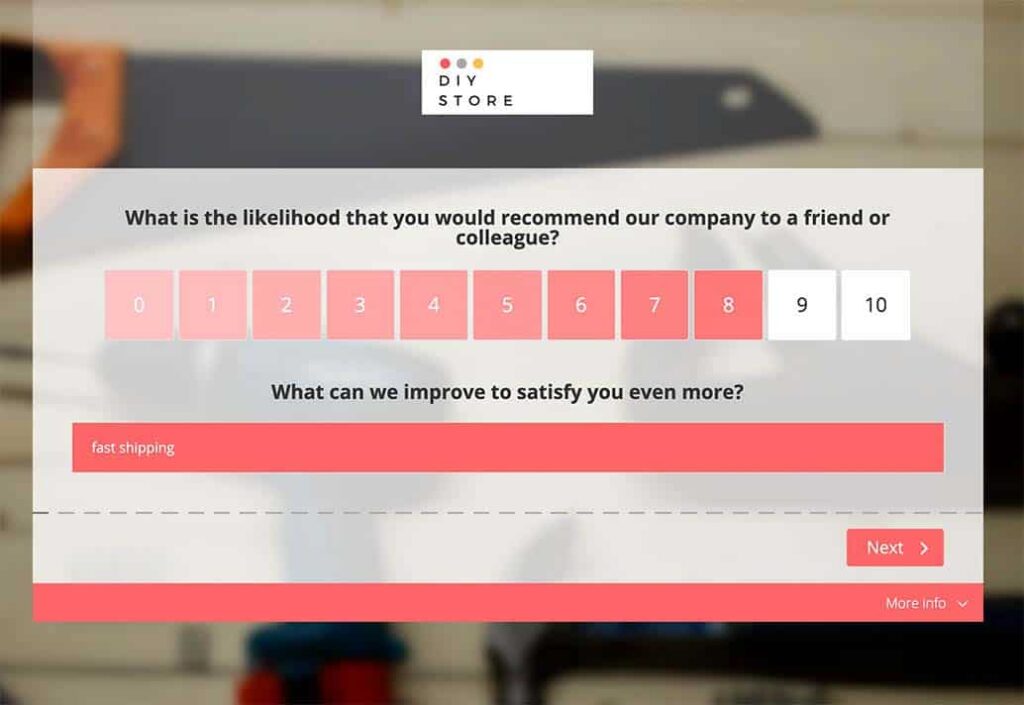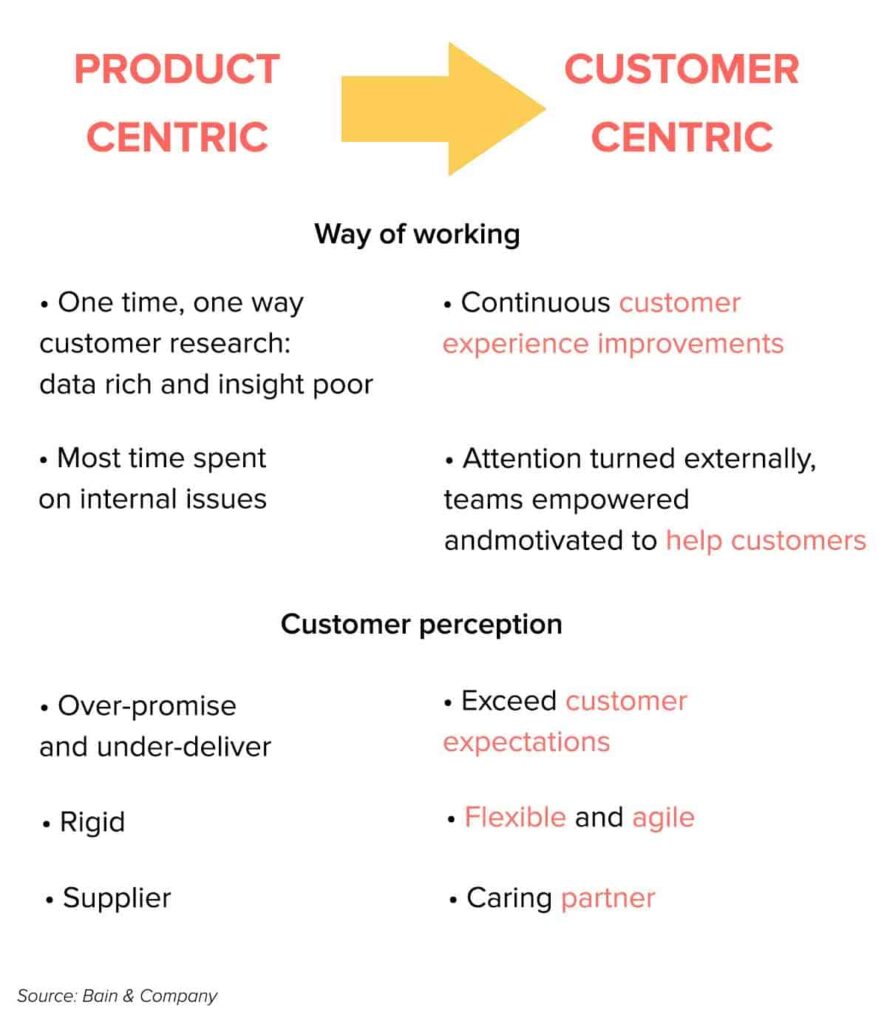We live in a world where customer sovereignty is stronger than ever. Customer preferences, feedback and recommendations have become key brand loyalty factors.
However, a large part of these considerations revolve around the end user. The B2B client, in the middle of end-customer engagement and loyalty, is often forgotten about.
Yet in B2B, customer loyalty is a powerful factor. Acquiring new clients is increasingly costly in terms of time and investment. Your ability to renew existing customer contracts is therefore key.
As a result, meeting customer targets, expectations and deadlines is essential to maintaining a long-lasting relationship.
Low B2B customer loyalty
The grim reality when working in B2B is that some customers never come back, even when you try to maintain the relationship. Worse still, they go straight to one of your competitors.

This is partly explained by the vast choice available to customers, who have higher expectations and very low loyalty.
A Bain & Company study of 290 B2B executives in 11 countries found that 68% of respondents feel that customers are less loyal than they used to be.
If you are a B2B manager and unsure how to handle customer disloyalty, the next step is therefore to determine if they are actually satisfied with your service.
An unhappy B2B client is silent
Few warning signs prior to B2B customer churn
Research shows that most unhappy clients never complain. On average, businesses only hear from 4% of their unhappy clients. Even more striking, between 65% and 90% of dissatisfied customers who do not complain will never buy from you again, which means you will never find out what was wrong.

Although complaints are often considered to be a sign of poor service or performance, it would be unwise to assume that no complaints means total customer satisfaction. Whereas the B2C market is becoming increasingly aware of the importance of addressing customer complaints, the B2B market is lagging behind.
How to detect a possible loss of B2B customers
A proactive attitude is essential to ensuring both customer satisfaction and loyalty. The challenge is to gather “silent customer” feedback, especially from those who are not satisfied, but do not make their opinions known.
A conventional approach is to entrust this task to a market research company or polling institute. Feedback is usually collected via one-off surveys and then analysed, but the time frame is too long.
Surveys are an excellent way to collect customer feedback and suggestions, provided that you collect continuous, real-time data. The constant change in business dynamics and the varied nature of B2B companies make it particularly challenging to determine B2B customer satisfaction.

To learn more, here is 8 reasons to create a customer satisfaction survey
Keeping in mind the complications of large accounts, suppliers, varied channel structures and geographical locations, it is simply impossible for one-off surveys to encapsulate the variety and complexity of this market. And if you work with an external service provider, the costs can be prohibitively high.
The importance of B2B customer knowledge
A lot of companies do not have a suitable system or process in place to monitor and improve customer engagement.
As a B2B manager, do you regularly contact your customers in order to better understand their level of satisfaction? If so, do you use the right means of communication? And most importantly, do you ask your customers the right questions?
Meeting customer expectations is the first step to nurturing a good customer relationship. If you take a proactive approach, you can turn your clients into true ambassadors for your brand. It is crucial to have a solid core of happy customers who actively promote your company in order to stay ahead of the competition.
Here are a few key areas to focus on if you are implementing a solid customer feedback acquisition strategy:
Prioritise the collection of continuous B2B customer feedback
If you spend two months collecting and analysing data, then any dissatisfied customers will probably have jumped ship before you can solve their problem.
You cannot implement a solid policy of continuous improvement in your company overnight, but if you can establish a continuous flow of feedback and take the time to act on your results, then you will be on the right track to becoming more agile and responsive.
Engage your entire team in a customer centric approach
It is in everyone’s interest to retain and acquire customers. Do not leave this task to one member of your team.
Different team members can contribute to different challenges, and everyone will benefit from the impact of positive customer feedback.

Do not spoil your B2B customers’ goodwill
Giving feedback can often feel like a heavy task for customers… Until they see the benefits!
Make sure you ask the right questions instead of using generic surveys. Do not bore your customers with long surveys.
Sometimes, when you think you have done your best to meet the customer’s expectations, you discover that the customer does not feel the same way. But the fundamental lesson is that you did not fail. Now you know how to improve.
In B2B, more so than elsewhere, acting on customer feedback is of crucial importance for your business’ success. In addition to building a relationship based on trust, you will eventually create an army of loyal brand ambassadors.
<!–[if lte IE 8]><![endif]–> hbspt.cta.load(20304540, ’50ae5644-02d5-4330-9b0d-0e79812f8ce1′, {“useNewLoader”:”true”,”region”:”na1″});
hbspt.cta.load(20304540, ’50ae5644-02d5-4330-9b0d-0e79812f8ce1′, {“useNewLoader”:”true”,”region”:”na1″});


















